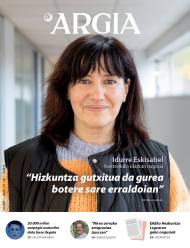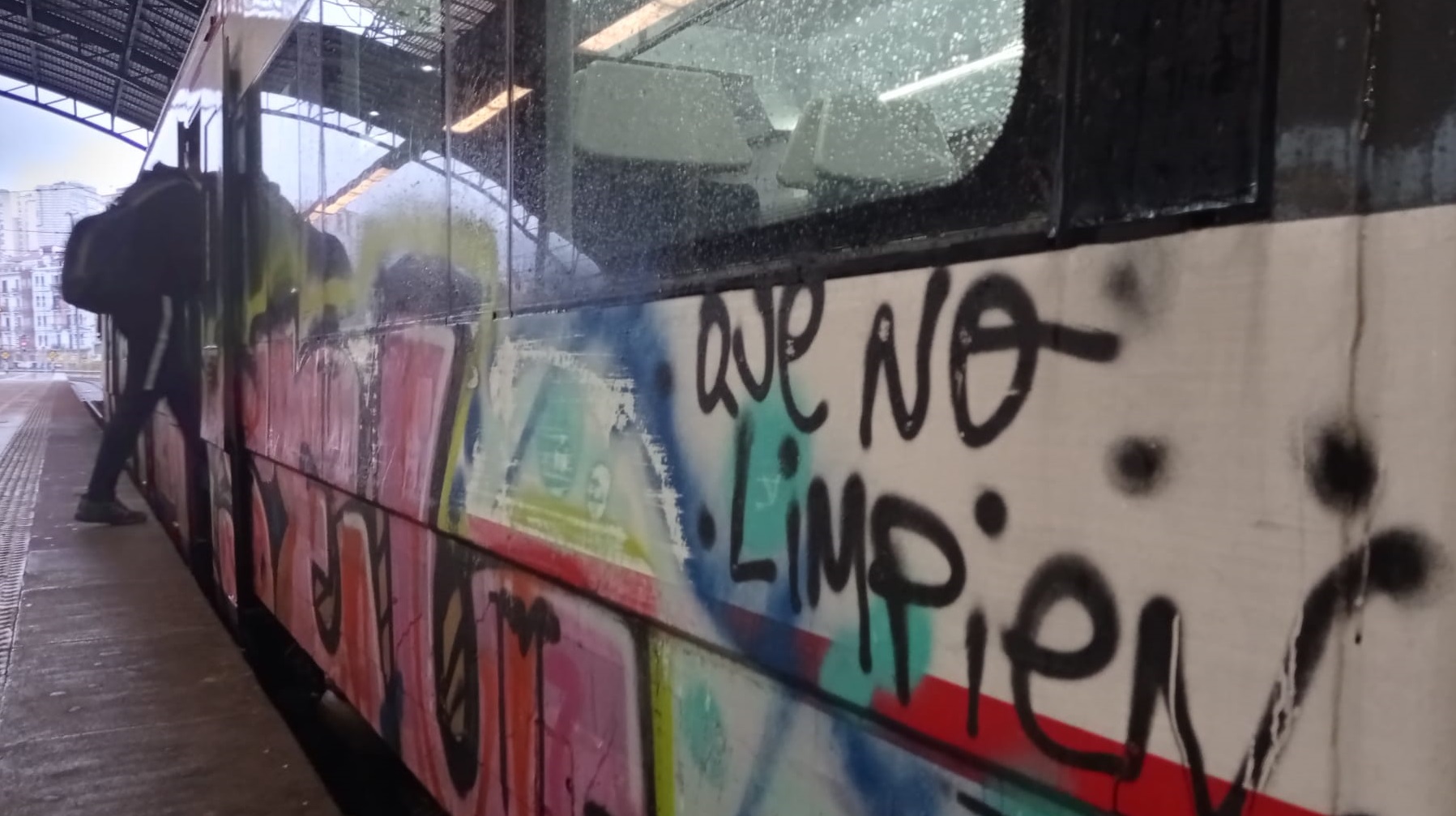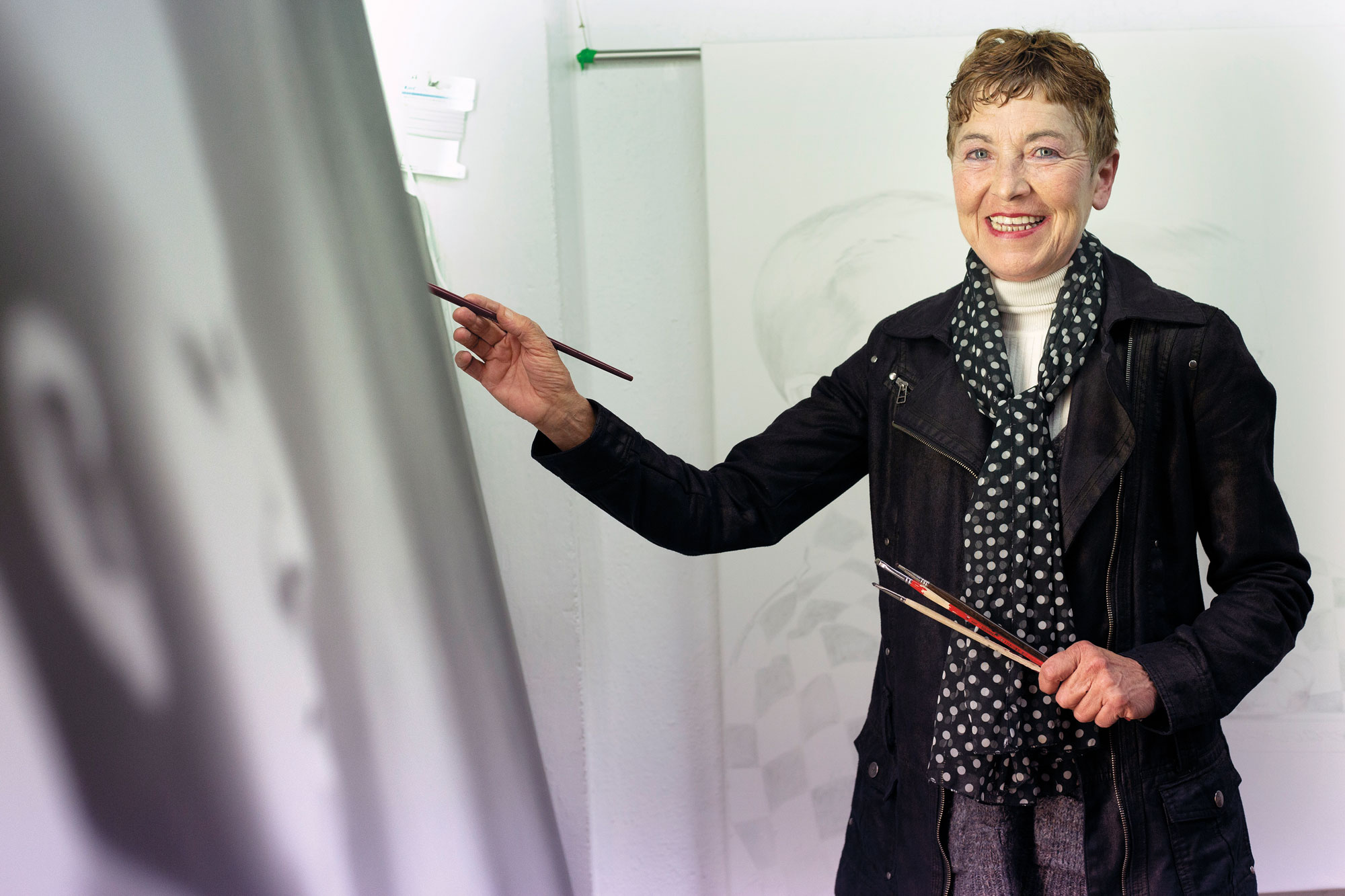Atlas of a paper empire
- In 1946, Jorge Luis Borges wrote the short story Of the rigor of science. In it he wrote about the relationship between maps and territories, and with an ancient empire, where maps were so accurate that they reflected the same size as the country. The perfect maps drawn by the cartographers acquired the size of the village, the province and the empire itself, until they became useless. This Borges story is the one approached by artists Iratxe Jaio and Klaas van Gorkum to contextualize the project presented at the San Telmo Museum in San Sebastián, within the Museo Doble program.
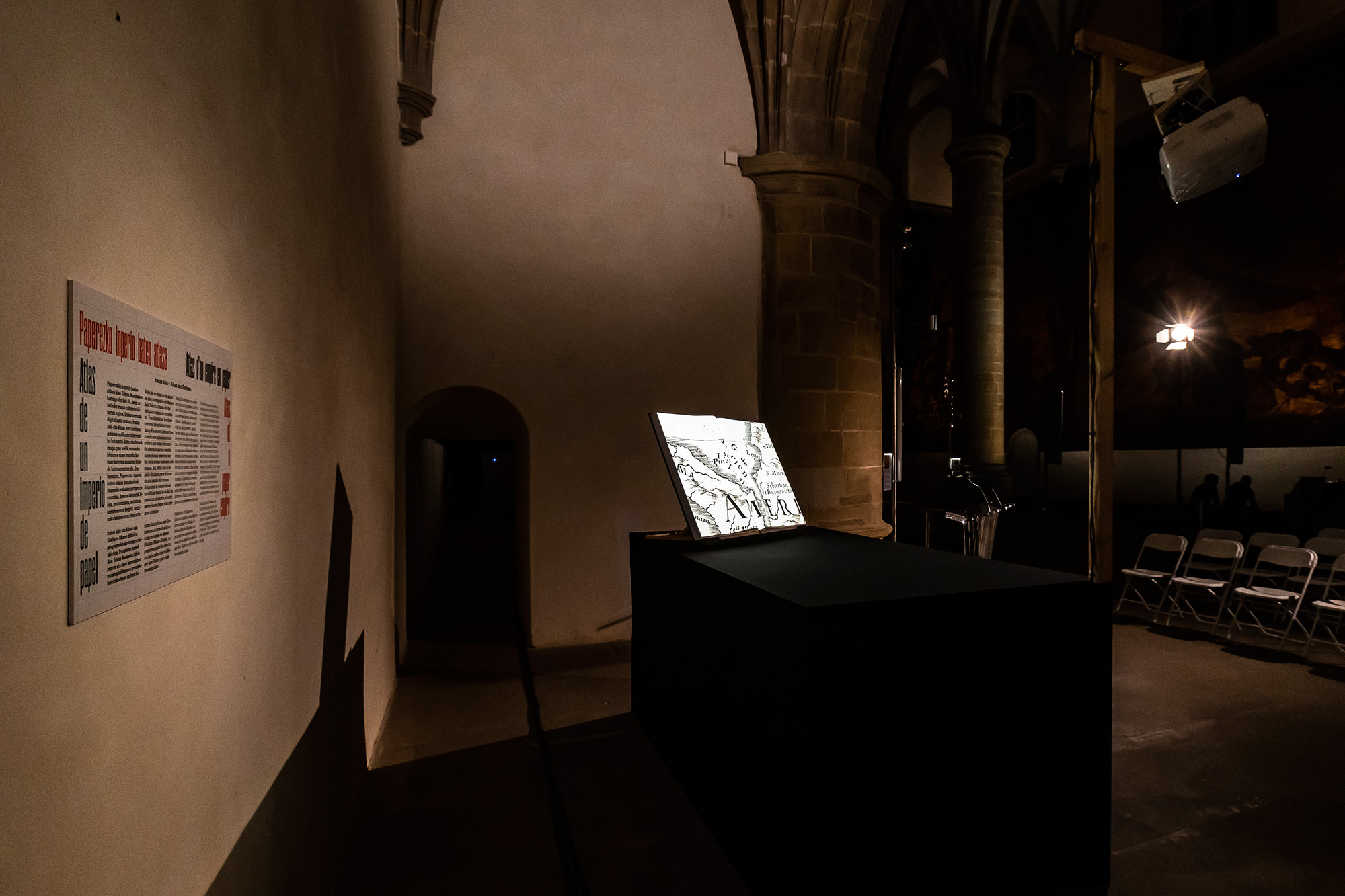
The Museo Doble is a project underway since 2018 at the museum in San Sebastian. An artist is invited to research the collection and heritage of the museum and from his perspective he is offered the opportunity to present an intervention or artistic project that influences both the collection and the museum's museography. What it creates – film, video, sculpture or drawing – has to do with the three times of the museum: with the past, because part of the museum’s collection or heritage; with the present, because it analyzes, interprets or interrogates from the current view the museum itself and its construction; and with the future, because the created work will become part of the museum’s collection. That is why this program is special and important, because year after year the works created by contemporary artists are incorporated into the artistic collection of the San Telmo Museum and refer to pieces, works of art, objects, documents or editions that are part of the collection and heritage, from the current view.
The origin of the project was the Soft Focus exhibition by artist Asier Mendizabal. Ordizia presented the exhibition at the museum in 2014 and the work presented was incorporated into the permanent exhibition of the museum. The installation of Mendizabal showed about 80 slides, reproducing some of the museum pieces that Sigfrido Koch made in 1976 for the Great Basque Encyclopedia through a diffuser filter called soft focus. This work reflected on photography and ethnography and was based on the stock images of the museum collection. It can be said that this operation was the seed to launch the Double Museum. In fact, as the San Telmo Museum is a social museum and an art collection, there was a desire to spread this artistic collection by incorporating the interventions of contemporary artists. The strict division between fine arts and ethnography is always a delicate issue in museums of this type. However, this program has opened a space of pioneering experimentation between the two categories, which also entails risks, but which through artistic practices expands the perspectives on the museum ethnographic collection and the narratives of the exhibition.
From this road, artists Iratxe Jaio (Markina-Xemein, 1976) and Klaas van Gorkum (Delft, Netherlands, 1975) have titled The Atlas of a Paper Empire to the work they have presented within the Double Museum project. This is a great piece of work that has seen the light of working for a year at the bottom of the museum. In the old church of San Telmo you can see a work with audiovisual form, surrounded by eleven canvases of the painter Josep Maria Sert, a projection embraced by the soft light that dominates the chapel. On a peana and supported in a lectern, a large hand-bound book is opened in which maps of different typologies are projected, such as a screen.
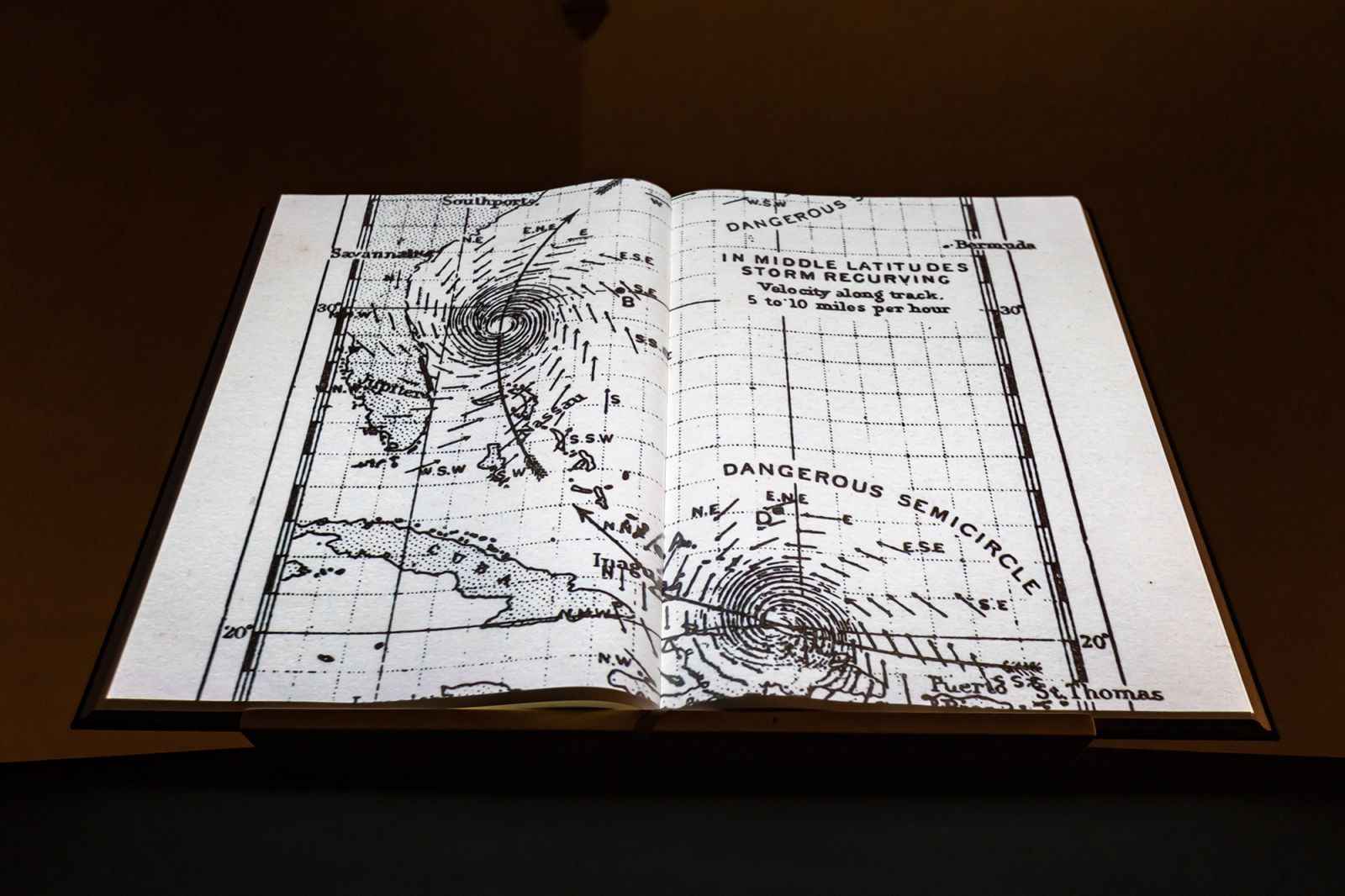
The maps that are projected
are a selection of maps, maps and ancient maps that are kept in the museum file. The maps that have been stored and archived for decades in the Pinacoteca warehouse and the Irún Warehouse were selected and began to be photographed, in detail, with a very high quality for further digitalization. To do this work well, they invented a robotic arm and accurately photographed maps with a macro objective zoom, elaborating a cartography of maps, going through the territories that reflected those centimetric maps, shortening distances, recording in their entirety the mountains, seas, rural areas and city streets, in an operation similar to that exhibited by Borges in his story. These thousands of digitalized images were archived and stored under an algorithm for the algorithm to select the images projected at every moment. The atlas of a paper empire is therefore an exhaustive record of the maps hidden at the bottom of the museum, a living portrait of a map that is materialized in a white leaflet book. The new maps are constantly projected on an unfinished journey. In addition, the quality of the map digitalization is so high that it allows the ink to be differentiated from the maps, the graph, the paper grain or the fingerprints of the lithograph. The exhibition, which will remain open until July 2023 in the museum chapel, will be incorporated into the museum’s collection so that the works of contemporary artists have a more prominent presence in the museum’s artistic collection.
The intervention of Jaio and van Gorkum was the fourth in the Museo Doble program. They have previously participated in the programme Jose Mari Zabala, Erlea Maneros Zabala and Ibon Aranberri. Zabala made a film, a documentary that departs from the museum's archives and documents under the title Magic, matter and necessity. This film is currently available in the Industry section of the permanent collection, agent of change. The invitation to participate in the Zabalari program was made through the artist Erlea Maneros Zabala. Maneros Zabala presented for the 2020/21 paradox a beautiful project named Norwegian. During this time, Pandemia completely marked Lekeitio's artist's view of a lithography of the collection: the stamp representing Cabo Antzoritz off the coast of Lekeitio. The artist discovered that the image of Pedro Pérez de Castro in the nineteenth century was far from reality and to prove it he took the piranagua and made several trips to the area with a photographic camera. Norwegian was therefore a project that, in addition to the photographic collection on the coast of Lekeitio and the aforementioned lithography, presented a video work. In addition, Maneros Zabala donated to the museum the branch of a lamb that was kept in his family for generations. The intervention of the artist who reflects on how images are created and the importance of imaginaries was very clear and intelligent, among other things because he proposed in a very organic way the past, the present and the future.
Zabala Maneros’ invitation came through Ibon Aranberri. Aranberri was the first to inaugurate the Museo Doble program and focused both on the cloisters of the museum and the steles built up in the almazenas. These steles, initially used horizontally, began to be placed vertically in the museum to occupy less space and present them upright, and Aranberri fixed the structures used to store them. From this observation, the artist reinterpreted a large storage structure, presented in the cloister himself. On the other hand, he made calcos in the reliefs of the steles, giving prominence to the graphic and symbology carved in the stone. Swiss artist Hinrich Sachs has been invited to participate next year in the Double Museum, in the logic, heritage and artistic collection of the museum.
Behin batean, gazterik, gidoi nagusia betetzea egokitu zitzaion. Elbira Zipitriaren ikasle izanak, ikastolen mugimendu berriarekin bat egin zuen. Irakasle izan zen artisau baino lehen. Gero, eskulturgile. Egun, musika jotzen du, bere gogoz eta bere buruarentzat. Eta beti, eta 35... [+]
This text comes two years later, but the calamities of drunks are like this. A surprising surprise happened in San Fermín Txikito: I met Maite Ciganda Azcarate, an art restorer and friend of a friend. That night he told me that he had been arranging two figures that could be... [+]
On Monday afternoon, I had already planned two documentaries carried out in the Basque Country. I am not particularly fond of documentaries, but Zinemaldia is often a good opportunity to set aside habits and traditions. I decided on the Pello Gutierrez Peñalba Replica a week... [+]









